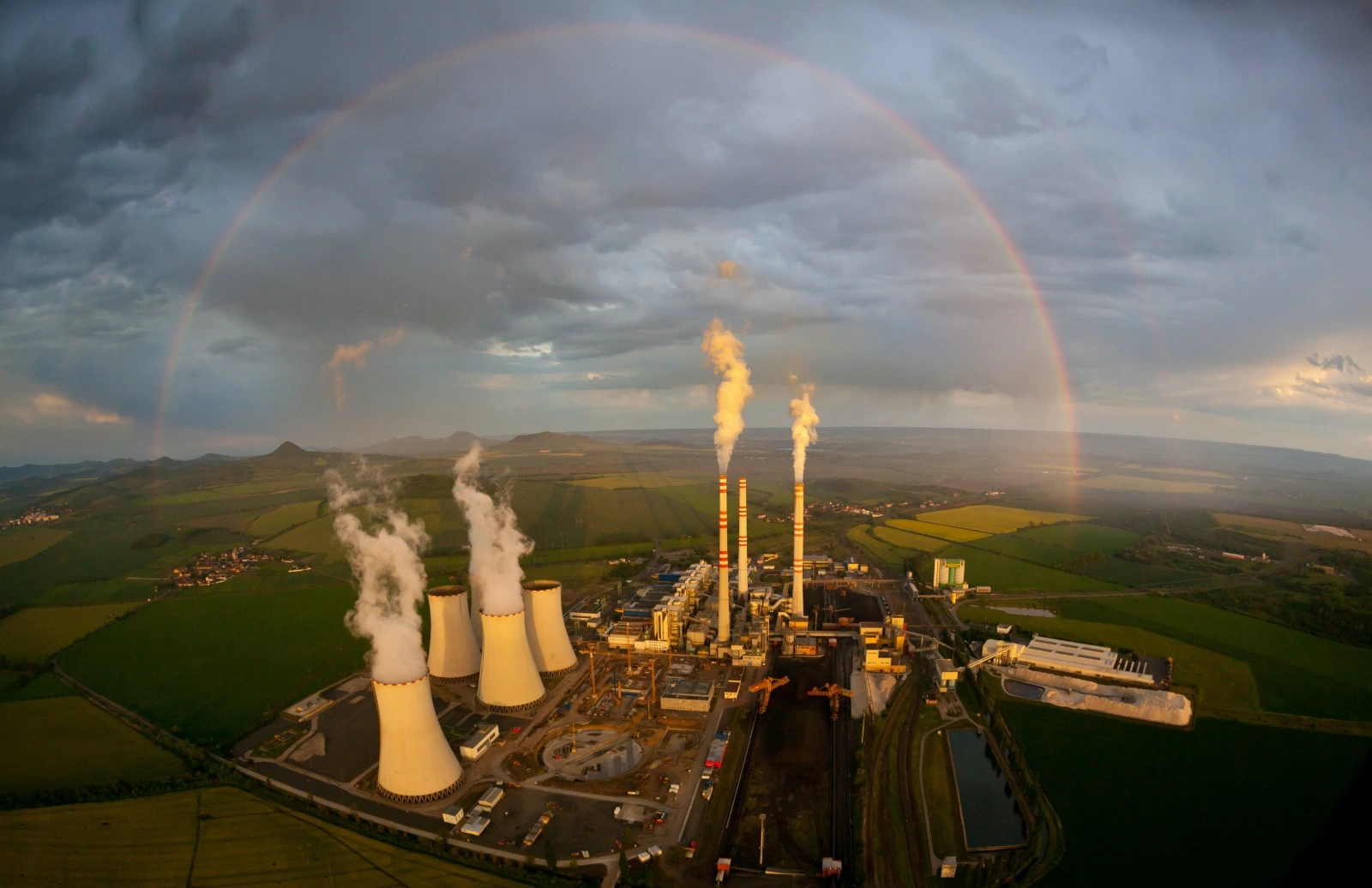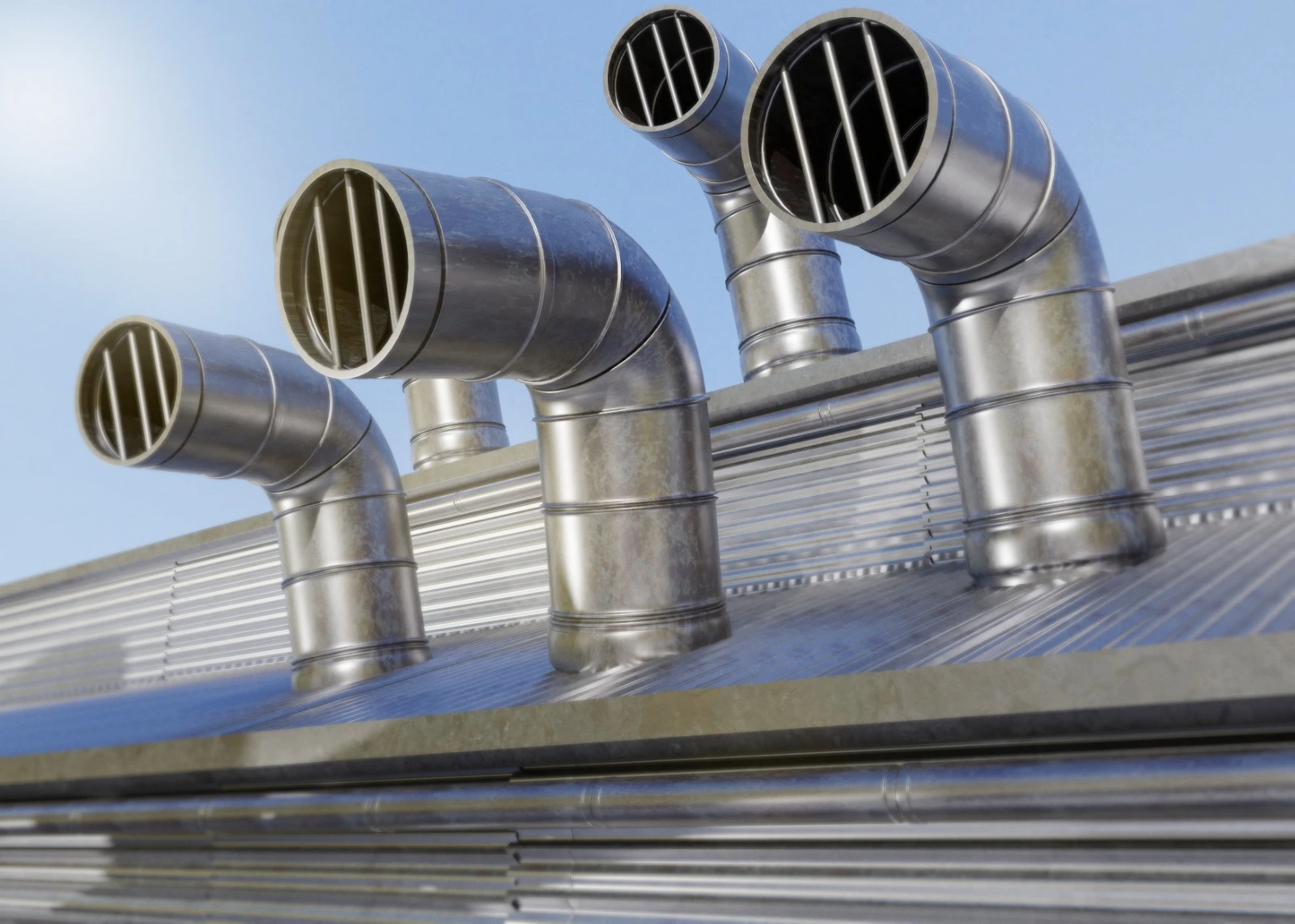Table of Contents
Using Carbon Capture, Utilization, and Storage, industries can adhere to regulations, unlock new revenue streams, and position themselves strategically in a market increasingly favoring sustainable practices.
However, there are multidimensional challenges that affect the deployment of carbon capture technology across industries. Overcoming these challenges requires a collaborative effort from the various stakeholders.
Also, by adopting certain policy recommendations, governments can create an environment conducive to the profitable deployment of CCUS in heavy industries, driving the transition to a cleaner and more sustainable energy future.
Various industries can integrate CCUS to enhance profitability and sustainability. Incorporating CCUS aligns industries with environmental goals, transforms emissions into assets, and ensures compliance, all contributing to long-term profitability and growth in a sustainable landscape.
Before we delve deeper into the dynamic genre of CCUS deployment, let us briefly understand the basics of the CCUS process.
What is Carbon Capture Utilization and Storage?
Carbon Capture Storage (CCS) also known as carbon sequestration stands as a strategic solution for heavy industries, particularly in Oil and Gas (O&G) and manufacturing. It enables environmental sustainability and profitability to walk hand in hand.
The process involves capturing carbon dioxide (CO2) emissions produced during industrial activities, transporting them, and ensuring a permanent storage of the captured carbon underground to prevent their release into the atmosphere. It also focuses on repurposing the stored CO2 in subsequent industrial processes.
Find the Latest CCUS Projects Around the World Collect Your Free Leads Here!

Why Do Industries Need CCUS?
Industries must prioritize checking carbon emissions and implementing Carbon Capture, Utilization, and Storage (CCUS) for several compelling reasons, especially from the perspective of profitability in heavy industries.
Firstly, staunch global emissions targets and increasing regulatory pressure necessitate industries to reduce their carbon footprint. Failure to comply with emissions regulations may result in financial penalties, reputational damage, and operational constraints, impacting profitability.
Adopting CCUS technologies aligns with the evolving market dynamics and consumer preferences favoring sustainable and environmentally conscious practices. Companies that proactively address their carbon emissions contribute to a positive corporate image, attracting environmentally conscious investors and consumers.
Additionally, heavy industries often face challenges related to carbon pricing mechanisms and trade tariffs based on emissions intensity. Implementing CCUS not only positions industries to navigate these economic considerations but also enables them to capitalize on potential financial incentives and subsidies governments offer to support emission reduction initiatives.
Furthermore, integrating CCUS can enhance energy efficiency and operational cost-effectiveness, ultimately boosting profitability. By capturing and utilizing carbon emissions, industries can optimize resource utilization, reduce waste, and potentially generate valuable by-products, thereby creating a more sustainable and economically viable business model.
Various companies have already adopted CCUS in their production process right from the budding phase of the technology. As a consequence, they have paved their way quite ahead in the run of Profitable sustainability.
Find the Latest CCUS Projects Around the World Collect Your Free Leads Here!
Challenges in Implementing CCUS
Implementing Carbon Capture, Utilisation, and Storage is a complex task. It has to combat multifaced challenges on the regulatory, economic, environmental, and operational front. It is extremely important to address these issues for the widespread adoption of CCUS technologies in heavy industries.

Unpredictable Regulatory Change
One of the biggest challenges is the unpredictability of regulatory frameworks. Heavy industries investing in CCUS face uncertainties regarding future emission standards, tax incentives, and government policies. Frequent changes in regulations can impact the economic feasibility of CCUS projects, creating uncertainty for industries aiming to align with the evolving environmental standards.
Cost of Carbon Capture Solutions and Fuel-Switching
The development and deployment of carbon capture solutions are capital-intensive endeavors. Industries face the challenge of managing the substantial costs associated with installing and operating carbon capture technologies. Additionally, switching to alternative fuels, a common strategy for reducing emissions presents economic challenges. Balancing the economic viability of these investments with the potential long-term benefits poses a significant hurdle.
Expanding End-User Markets
Creating robust end-user markets for captured CO2 is critical for the success of CCUS. Industries must identify and develop applications for captured carbon that extend beyond traditional uses. This involves collaborative efforts to establish markets for carbon utilization in sectors such as agriculture, construction, or carbon-intensive manufacturing. Expanding these markets ensures a sustainable demand for captured carbon, making CCUS economically viable in the long run.
Environmental Implications of CO2 Storage
Storing captured CO2 underground raises environmental concerns. The potential for leakage or unintended consequences of long-term storage poses challenges in gaining public acceptance. Ensuring the safety and integrity of storage sites, and developing effective monitoring and verification mechanisms are essential to address these environmental implications.
Impurity of CO2 from Point-Source Capture Processes
Point-source carbon capture processes may result in impure CO2 streams, containing contaminants that can affect storage or utilization. Purifying the captured CO2 to meet specific standards adds complexity and cost to the overall process. Innovations in capture technologies and purification methods are required to address these impurities and ensure the quality of the captured CO2.
Ensuring Material Integrity to Avoid Corrosion and RDF
Material integrity is a critical concern in CCUS infrastructure. The corrosive nature of CO2 and the potential for running ductile fracture (RDF) in pipelines and storage facilities pose significant challenges. Industries must invest in materials that resist corrosion and implement rigorous monitoring and maintenance protocols to ensure the longevity and safety of the CCUS infrastructure.
Operational Challenges Affecting Efficiency
The day-to-day operation of CCUS facilities introduces various operational challenges. Maintaining optimal efficiency, minimizing downtime, and troubleshooting technical issues is essential for the economic viability of the CCUS project. Skilled personnel, robust maintenance strategies, and continuous technological advancements are necessary to overcome these operational hurdles.

Policy Recommendation
It is important to emphasize the adoption of certain policies to accelerate the deployment of Carbon Capture, Utilization, and Storage in heavy industries and enhance profitability. The following guidelines highlight the key areas for policy intervention
Financial Incentives and Subsidies
Establish financial incentives and subsidies to encourage heavy industries to invest in CCUS technology.
Introduce tax credits, grants, or subsidies for businesses adopting CCUS, thereby offsetting initial capital costs.
Carbon Pricing Mechanisms
Implement carbon pricing mechanisms, such as carbon taxes or cap-and-trade systems, to create economic incentives for industries to reduce CO2 emissions through CCUS.
Ensure that carbon pricing policies are designed to be fair and not disproportionately burden heavy industries, taking into account international competitiveness.
Streamlined Regulatory Framework
Develop a clear and streamlined regulatory framework to expedite the permitting process for CCUS projects.
Simplify regulatory compliance for heavy industries adopting CCUS technologies to minimize administrative burdens and encourage participation.
Find the Latest CCUS Projects Around the World Collect Your Free Leads Here!
Public-Private Partnerships
Facilitate public-private partnerships to share the risks and benefits of CCUS deployment in heavy industries.
Encourage collaboration between governments, industries, and financial institutions to create a conducive environment for investment in CCUS projects.
Life-Cycle Assessments
Life-cycle assessments of emissions savings for CCUS projects that provide transparency and confidence in the environmental benefits are important.
Link policy actions to robust life-cycle assessments to guide decision-making and promote accountability in achieving emission reduction targets.
International Cooperation
To foster international cooperation and knowledge sharing on CCUS technology and policies to leverage global expertise and promote standardized practices.
Collaborate with other countries to establish a cohesive global framework that supports the deployment of CCUS in heavy industries while ensuring fair competition.
Overcome Challenges
Overcoming the challenges associated with Carbon Capture, Utilization, and Storage (CCUS) deployment is crucial for heavy industries to enhance profitability and contribute to sustainable practices. Several strategies can be employed to address these challenges.
Technology Research and Development Support
Allocation of funds for the research and development of innovative CCUS technologies specifically tailored for heavy industries is required. Also, fostering collaboration between research institutions, government agencies, and industries to accelerate technological advancements is an equal need of the hour.
Regulatory Support and Incentives
Governments can play a pivotal role by providing regulatory support and financial incentives. Policies that encourage and reward CCUS implementation, such as tax credits, subsidies, and CO2 emission reduction credits, can significantly offset the initial investment costs for heavy industries. Ensuring a clear and stable regulatory framework will provide the necessary confidence for long-term investments.
Public-Private Partnerships
Establishing effective partnerships between the public and private sectors can help share the financial risks and responsibilities associated with CCUS deployment. Governments can facilitate collaboration by creating platforms for knowledge exchange, funding joint projects, and fostering a conducive environment for private sector engagement.
Infrastructure Development
Investing in the development of infrastructure, including pipelines and storage facilities is extremely important. It is necessary for the transportation and storage of captured carbon dioxide. Also, it must be ensured that the infrastructure is strategically located to serve heavy industrial clusters, maximizing the efficiency and economic viability of CCUS deployment.
Knowledge Sharing and Capacity Building
Promoting knowledge sharing and capacity building within the industry is important. Establishing training programs, workshops, and forums that facilitate the exchange of best practices and lessons learned about carbon dioxide removal can expedite the learning curve for heavy industries looking to adopt CCUS technology.
Addressing Public Perception
Effectively communicating the environmental and economic benefits of carbon capture storage and utilization is essential to gaining public acceptance. Industries should communicate transparently to address concerns, demystify the technology, and showcase the positive impact on local communities and the broader environment.
Overcoming the challenges of CCUS deployment in heavy industries requires a comprehensive and collaborative approach. By leveraging technological advancements, regulatory support, partnerships, infrastructure development, knowledge sharing, and effective communication, heavy industries can navigate challenges successfully, making CCUS a profitable and sustainable solution to control carbon emissions.

How Different Industries Can Implement CCUS?
Incorporating Carbon Capture, Utilization, and Storage (CCUS) into various industries holds the potential to enhance both profitability and sustainability by mitigating carbon emissions. Here's an elaboration on how different industries can integrate CCUS into their industrial process, emphasizing the dual goals of economic viability and environmental responsibility:
Power Generation
Carbon Capture, Utilization, and Storage (CCUS) in power generation enhances profitability by curbing emissions. Power plants can install post-combustion capture technologies to capture CO2 before it enters the atmosphere. This not only aligns with environmental regulations but also opens avenues for selling or reusing captured carbon, creating new revenue streams.
Oil & Gas
For the oil and gas industry, CCUS presents an opportunity for sustainable growth. In enhanced oil recovery (EOR), captured CO2 is injected into reservoirs, boosting oil extraction and extending field life. This dual benefit of increasing oil yields while reducing carbon footprint contributes to long-term profitability, positioning companies favorably in a carbon-conscious market.
Chemical Manufacturing
In chemical manufacturing, integrating CCUS technology optimizes processes, making them more environmentally friendly and economically viable. By capturing CO2 emissions from production processes, companies can comply with emission targets and generate carbon credits. These credits can be traded or sold, directly impacting the bottom line and fostering industry growth sustainably.
Cement and Lime Production
The cement and lime industry can enhance profitability through CCUS by capturing CO2 emissions during the production process. Utilizing carbon capture technology not only ensures compliance with emissions standards but also creates opportunities for utilizing captured CO2 in the production of construction materials or other valuable by-products. This dual strategy not only reduces environmental impact but also contributes to the industry's economic resilience.

Incorporating CCUS across these industries not only aligns with environmental goals but also presents a strategic approach to profitability and growth. It transforms emissions into assets, creating new revenue streams, ensuring compliance, and positioning these sectors at the forefront of sustainable practices in a rapidly evolving market.
FAQ
What is the difference between CCS and CCUS?
Carbon Capture and Storage (CCS) involves capturing and storing carbon dioxide emissions, preventing them from entering the atmosphere. Carbon Capture, Utilization, and Storage (CCUS) go a step further by not only capturing and storing CO2 but also finding ways to utilize it in various applications across various industries.
What is the most effective way to capture carbon?
For centuries, trees have proven to be an effective carbon capture method, sequestering and storing carbon as long as they remain upright. Earth's forests annually absorb 7.6 billion metric tons, roughly one-third of the world's yearly emissions.
Is carbon capture expensive?
Yes, carbon capture is often expensive due to high initial costs and operational expenses associated with the technology, making its widespread implementation challenging without financial incentives.
Is CCUS profitable?
Yes, CCUS can be profitable, offering industries revenue from carbon utilization, compliance with emission regulations, and potential cost savings through enhanced energy efficiency, creating a sustainable business model.
What are the risks of CCUS?
The risks of CCUS include unpredictable regulatory changes affecting project feasibility, high costs for implementing carbon capture technologies, potential environmental concerns related to CO2 storage, impurities in captured CO2 impacting utilization, and operational challenges in maintaining efficiency and safety in CCUS facilities.
Discover CCUS projects with ease
Are you looking for a platform that gives you reliable, high-quality, and timely project insights for CCUS projects around the world?
Discover the Global Project Tracking (GPT) platform by Blackridge Research, designed to provide you with the most recent CCUS Projects and Tenders around the world better and faster across various stages of development:
- Upcoming projects
- Tender Notices
- Contract award announcements
- Projects in progress or under construction
- Successfully completed projects.
The user-friendly interface helps you obtain early-stage awareness of projects and find the right business opportunity quickly.
Each project will have all the essential details, such as scope, capacity, CapEx, status, project description, companies involved, funding information, location, periodic updates, important event dates like construction start date, commissioning dates, and key contact information of project owners and stakeholders.
The database is a vital resource for a wide range of entities, including energy companies, industrial manufacturers, technology providers, investment firms, government agencies, regulatory bodies, research institutions, environmental consulting firms, utilities, and grid operators, renewable energy developers, and carbon offset market participants.
Book a Free demo to learn more about the global CCUS projects database and how we can help you achieve your goals.







Leave a Comment
We love hearing from our readers and value your feedback. If you have any questions or comments about our content, feel free to leave a comment below.
We read every comment and do our best to respond to them all.